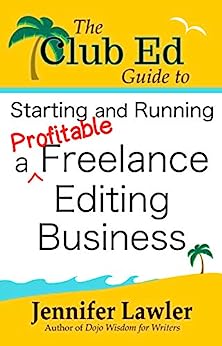Editor’s Insight: Lisa Poisso
I’m re-running this blog post because Lisa will be talking with Club Ed members (Tuesday, March 7, 2023) about landing and working with indie author clients. For more information on becoming a Club Ed member, click here.
I asked several experienced editors to weigh in on three of their top tips for succeeding as a freelance editor and they were kind enough to share their time and expertise. Lisa Poisso is the first of these editors.
She’s a fiction editor and story coach specializing in debut and emerging writers.
She says, “I help writers understand how stories work and apply that to their own books. Then I usher them through the glories of a comprehensive editorial process.
“As a classically trained dancer, I approach creative fluency—a writer’s freedom of movement on the page—through a grounding in structure, form, and technique. My role as a coach and editor is to show writers how, in the words of the great Pablo Picasso, to learn the rules like a pro so they can break them like an artist.”
Lisa’s Top Three Tips
Your best marketing tip
It’s tempting to try to be everywhere on social media and emulate the marketing of editors who do it well, but it’s more effective to figure out who your ideal clients are and go where they hang out. For example, my clients are debut writers who don’t have established networks, so referrals and social media and online writing groups aren’t ideal sources for me. My clients are mature professionals who sit down with Google and their computers, not social media and their phones, when they’re ready to write—so a website with kickass SEO is just the ticket. Think like the people you want to work with, and be wherever they go.
Your best “learning the skill” tip
Story editors can never get enough practice. Studying TV and movies for story structure and reading (across all genres, ahem) is a given. Compare your notes with professional and reader reviews to see how other readers saw the same material. At work, try to do as many manuscript critiques as possible. You want volume and experience, so don’t bog down in big dev edits before you feel fluent. And don’t get sidetracked by the lure of paid beta reading. Reader reaction is a whole different level of feedback than professional critique—or it should be, and your own reading and review practice will reveal the difference.
And your best business practice tip
Track your time religiously for the first few years to help you learn what works best for your workstyle. Details like whether you turn off the clock for coffee breaks don’t matter; just be consistent. Note word counts, type and level of editing, and number of revisions and comments. Review this once or twice a year to identify trends, strengths, and weaknesses. Tracking is a smart continuing practice, but skip it when life gets hairy if clock-watching adds stress.
Find Lisa here:
Website: https://www.lisapoisso.com/
Twitter (best place for editorial networking): https://twitter.com/LisaPoisso
Facebook: https://www.facebook.com/LisaPoissoEditorial
Instagram: https://www.instagram.com/lisapoisso/
Join the Club!
New to story editing? Begin at the beginning.


